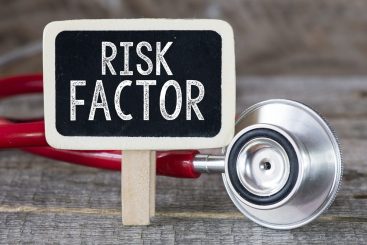Table of Contents
Neuroblastoma is a malignant tumor that forms in the cells of the peripheral nervous system, part of the nervous system consisting of ganglia and nerves that circulates information between the organs and central nervous system (CNS) and responsible for supervising a large number of unconscious activities of the organism such as heartbeat or contraction of smooth muscles. Although the cancer is more likely to develop in the nerve tissue of the adrenal gland, sometimes it can arises in other body sites where there are sympathetic nerve structures: spine, abdomen and occasionally the chest, neck or pelvis.
Unlike many other cancers, environmental factors play no role in the occurrence of neuroblastoma. The development of the cancer is most commonly associated with certain syndromes such as neurofibromatosis (Von Recklinhausen disease) and Hirschsprung’s disease.
Neuroblastoma Statistics
Neuroblastoma accounts for approximately 7% of cancers in children under 15 years. It is considered as the 3rd most common cancer after hematologic malignancies and tumors of the central nervous system.
Overall, neuroblastoma represent environ 15% of cancer death among children; the tumor causes nearly 10 deaths per million children aged 0-4 years old, and 4 deaths per million in children aged 4-9 years old. Number of people diagnosed with neuroblastoma each year in the US is estimated at 650, according to the American Cancer Society.
Incidence of neuroblastoma decreases with age. According to the National Cancer Institute, incidence decreases every consecutive year up to age 10, after which the disease is rare. Age distribution at diagnosis is as follows:
- 40% patients are younger than 1 year,
- 35% patients are aged 1-2 years
- 25% patients are older than 2 years.
Neuroblastoma Causes
The causes leading to the development of neuroblastoma are not well known. In fact, in most cases of neuroblastoma, a cause is never identified. However, scientists believe that genetics may play a role in a form of neuroblastoma called “Familial neuroblastoma”. A germline mutation in the anaplastic lymphoma kinase (ALK) gene is suspected in the development of familial neuroblastoma.
Some scientists also suggest that certain allergic hypersensitivity (atopy) and infection early in life can neuroblastoma.
Neuroblastoma Risk Factors
The risk factors for neuroblastoma are not well known, there are only suspicions. Some of the suspected factors include:
- Family history– family history is the most suspected factor in the increased risk of neuroblastoma; however, a small percentage of neuroblastoma is related to genetics.
- Race –Incidence of neuroblastoma is higher among white children than among black children.
- Sex –incidence of neuroblastoma is slightly higher among males.
Other inconclusive risk:
- smoking
- alcohol
- use of certain medicinal drugs during pregnancy
- use of hormones and infertility drugs
- using maternal hair dye.
Neuroblastoma Symptoms
Symptoms of neuroblastoma vary depending on the location of the tumor, your age and the presence or absence of metastasis.
If the neuroblastoma is in the abdomen, you will experience the following symptoms:
- abdominal pain
- swollen belly
- swollen legs
- loss of appetite
- constipation
- feeling of fullness in the abdomen
- need to go to the bathroom more often
- presence of a mass under the skin that isn’t tender when touched.
If the neuroblastoma is in your chest, you may experience the following symptoms:
- fatigue
- breathing problems
- swollen face
- Eyes problems: drooping eyelids, unequal pupil size, etc.
In addition, neuroblastoma can provoke the following symptoms:
- fever
- back pain
- bone pain
- irritability (children)
- curving of the spine (scoliosis)
- unexplained weight loss
- lumps of tissue under your skin
- Forward displacement of the eye in the orbit (proptosis); in addition, you may experience dark circles around your eyes.
Neuroblastoma Complications
Neuroblastoma tends to spreads to other parts of the body: lymph nodes, bone marrow, eyes, liver, skin, spinal cord; in fact, it is estimated that nearly 60% of all neuroblastoma cases are metastasized.
In addition, neuroblastoma tends to cause spinal cord compression, which can lead to paralysis.
Neuroblastoma Diagnosis
To confirm that you have neuroblastoma, your doctor will recommend the following medical procedures:
- Physical exam and history– during this physical exam, your doctor will look for signs indicating the disease: abdominal pain, swollen belly, swollen legs, swollen face, etc. in addition, he will check your medical history, which can give a better idea on how to approach the diagnosis.
- Urine test– a twenty-four-hour urine test can be performed to detect an increased amount of homovanillic acid (HMA) and vanillyl mandelic acid (VMA), two substances indicators of neuroblastoma.
- Blood test– during this exam, a lab specialist will collect your blood sample to perform laboratory analysis. He will search for abnormal amount of substances which can be a sign of neuroblastoma. In the case of neuroblastoma, the exam can reveal an increased amount of the hormones dopamine and norepinephrine. Although an amount higher than normal does not automatically confirm the diagnosis, it is, however, a red flag.
- Abdominal Ultrasound– this imaging technique allows your doctor to visualize your internal organs, and detect the tumor. In addition, an abdominal ultrasound can be used as a guide to perform a biopsy of the tumor mass.
- Biopsy of the tumor– this procedure consists of removing sample of cells or tissue of the tumor to be studied under a microscope. In general, the diagnosis of neuroblastoma requires confirmation by biopsy. In addition, the biopsy is also necessary to investigate the presence or absence of amplification of N-myc in the tumor cells.
- Bone marrow aspiration and biopsy– this procedure is performed under anesthesia. Your surgeon removes a small piece of bone marrow, blood, and bone by inserting a hollow needle into your hipbone or breastbone. The samples are then examined under a microscope by a pathologist to look for cancer cells.
Neuroblastoma Stages
Once the cancer is found, your doctor will determine its stage. This is important not only for the choice of treatment but also the prognosis. In general, stages of neuroblastoma include:
- Stage I– the tumor is localized and can be totally removed by surgery.
- Stage IIA –the tumor is still localized but has affected lymph nodes connected to it.
- Stage IIB –at this stage, the neuroblastoma has reached both the lymph nodes connected to the tumor and the lymph nodes nearby, which makes surgery removal difficult.
- Stage III –at stage 3, the cancer has increased in size, and surgical removal is not possible.
- Stage IV –neuroblastoma at this stage has reached not only lymph nodes nearby but other distant parts of the body.
- Stage IVS –children younger than 1 year old mostly experience Stage IVS neuroblastoma. At this stage, the cancer has spread to other parts of the body: eyes, liver, skin or spinal cord. Surprisingly, despite its aggressive characteristic, sometimes, the tumor goes away on its own with no special treatment.
Neuroblastoma Treatment
Neuroblastoma treatment can include chemotherapy, surgery, stem cell transplant, and radiation therapy.
Chemotherapy
Chemotherapy is the use of powerful drugs to destroy cancer cells. Chemotherapy can be given to: reduce the size of the tumor in order to make possible the surgery; treat metastases, if metastases were discovered at diagnosis; and prevent metastasis in cases of a localized neuroblastoma. Most of the times, chemotherapy is used before surgery and before bone marrow stem cell transplant.
Chemotherapy can also be performed after the surgery. In such cases, chemotherapy is used to destroy cancer cells remain after surgery or cells that are passed into the bloodstream during surgery.
Chemotherapy can bring good results, but it also destroys healthy cells in the bone marrow, which can require a stem cells transplant.
Stem cell transplant
In case of a very serious neuroblastoma, your doctor can recommend a stem cell transplant. This therapy consists of taking your own blood stem cells (autologous stem cell transplant) – in case there is no trace of cancer in the bone marrow – to be then injected into your body after the chemotherapy. Stem cell transplant allows the use of high doses chemotherapy and / or radiotherapy which can result in improved survival rate or complete healing. The transplant allows the reconstruction and regeneration of bone marrow and maintaining normal production of these cells.
Radiation therapy
Radiation therapy consists in using high doses of energy particles to destroy cancer cells. It is a local treatment that addresses the exact body part where it is aimed. Radiation therapy can be used to reduce the size of the tumor or reduce the risk of recurrence of the neuroblastoma. However, risks of sequela (or sequelae) related to the therapy are enormous. Therefore, radiotherapy is reserved only for aggressive forms of neuroblastoma.
Surgical treatment
Surgery may be performed before or after chemotherapy. The surgery involves surgical removal of the tumor or cancer cells, when it is possible. In general, surgery is performed in cases of localized neuroblastoma. In fact, in a well localized tumor, surgery may be the only treatment recommended by your doctor. Surgery is often followed by chemotherapy and/or radiation to kill remaining cancer cells.
Neuroblastoma Survival Rates
Improvements in diagnostic imaging modalities, medical and surgical management, and supportive care have contributed to an improved survival rates of neuroblastoma. The five-year survival rate is approximately:
- 83% for infants
- 55% for children aged 1-5 years
- 40% for children older than 5 years.
Neuroblastoma Prevention
Since the causes of neuroblastoma are unknown, there is no exact method to prevent it. However, the best way to prevent the formation of any cancer in your body or your fetus’ is living a healthy lifestyle. Your lifestyle as well as your environment and your workplace may be open door to development of cancer.
In addition, to reduce the risk of neuroblastoma, avoid the following:
- smoking
- alcohol
- use of certain medicinal drugs during pregnancy
- use of hormones and infertility drugs
- use maternal hair dye.




